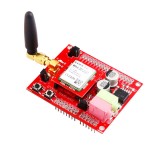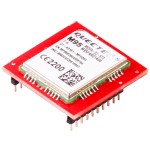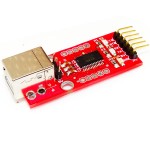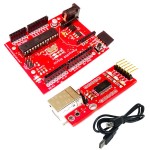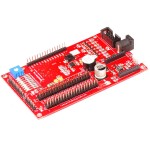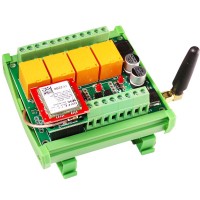The Shield connects your Arduino to the internet using the GPRS wireless network. Just plug this module onto your Arduino board, plug in a SIM card from an operator offering GPRS coverage and follow a few simple instructions to start controlling your world through the internet. You can also make/receive voice calls (you will need an external speaker and microphone circuit) and send/receive SMS messages.
Features:
Key benefits
- One of the smallest Quad-band GSM/ GPRS modules
- Easier soldering process with LCC package
- Embedded Class-AB amplifier
- Power consumption as low as 1.3mA
- Embedded powerful Internet service protocols, multiple Sockets & IP addresses
- eCall / ERA-GLONASS (Supported in specific firmware)
- QuecFOTATM
- Jamming detection
- DTMF decoding.
Applications:
- Industrial automation.
- GPRS based data logging.
- GPRS and GPS application.
- Home automation.
- Health monitoring.
- Agriculture automation.
- Vehicle tracking.
- Remote monitoring and controlling.
- GPRS based Weather report logging.
- GSM GPRS based Security alert.
- GPRS based remote terminal for file transfer.
- IVRS.
- Bulksms sending.
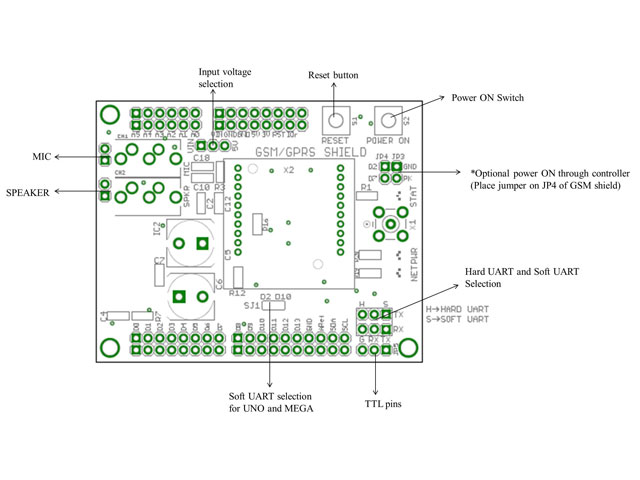
| M95 General Features |
| |
Quad-band |
850/ 900/ 1800/ 1900MHz |
| |
GPRS Multi-slot Class |
12, 1~12 configurable |
| |
GPRS Mobile Station |
Class B |
|
|
Compliant to GSM Phase 2/2+
|
Class 4 (2W @ 850/ 900 MHz)
Class 1(1W @ 1800/1900MHz) |
| |
Supply Voltage Range |
3.3~4.6V 4.0V nominal |
|
|
Low Power Consumption
|
1.3mA @ DRX=5
1.2mA @ DRX=9 |
| |
Operation Temperature |
-40 °C to +85 °C |
| |
Dimensions |
19.9 × 23.6 × 2.65mm |
| |
Weight |
Approx. 3.0g |
| |
Control via AT commands |
GSM 07.07 ,07.05 and other enhanced AT Commands |
| M95 Specifications for Data |
| |
GPRS Class 12 |
Max. 85.6kbps (uplink & downlink) |
| |
PBCCH Support |
|
| |
Coding Schemes |
CS 1, 2, 3, 4 |
| |
USSD |
|
| |
Non Transparent Mode |
|
| |
Protocols |
PPP/ TCP/ UDP/ HTTP/ FTP/ SMTP/ SSL |
| M95 Specifications for SMS via GSM /GPRS |
| |
Point-to-point MO and MT |
|
| |
SMS Cell Broadcast |
|
| |
Text and PDU Mode |
| M95 Specifications for Voice |
| |
Speech Codec Modes |
Half Rate (HR)
Full Rate (FR)
Enhanced Full Rate (EFR)
Adaptive Multi-Rate (AMR) |
| |
Echo Arithmetic |
Echo Cancellation
Echo Suppression
Noise Reduction |
| M95 Interfaces |
| |
SIM/ USIM |
3V/ 1.8V |
| |
UART |
2 Interfaces |
| |
Analog Audio Chanel |
2 Embedded Class-AB amplifier in one channel |
| |
PCM |
|
| |
RTC Backup |
|
| |
Antenna Pad |
|
| |
| M95 Certifications |
|
|
CE/ FCC/ GCF/ PTCRB/ NCC/ ANATEL/ IC/ ICASA/ UCRF/ RCM/ Vodafone |
Screenshot:
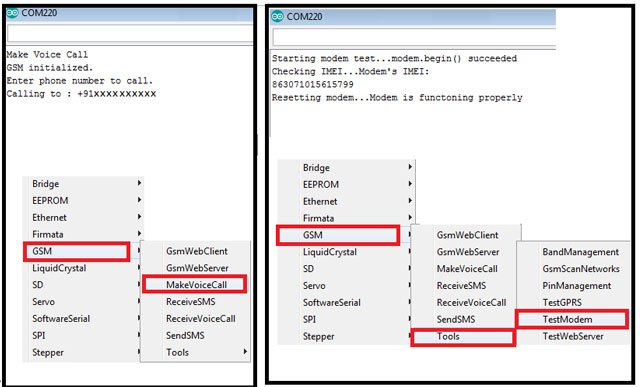
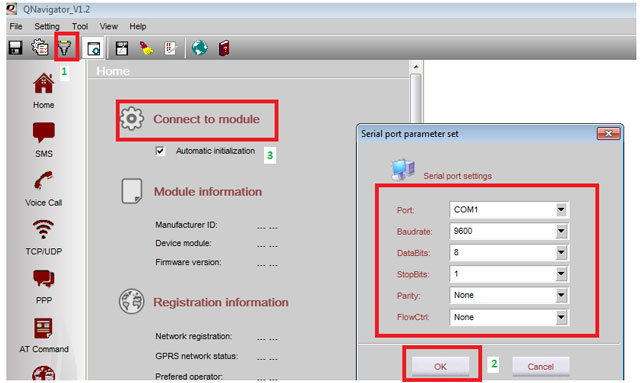
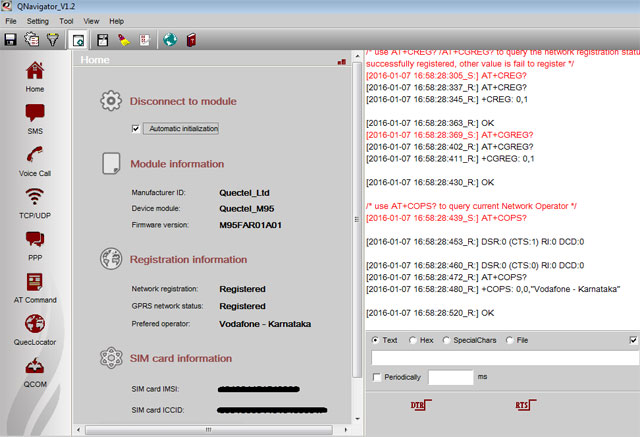

Note: The Arduino Board in the picture above is just for reference , it does not include in the package.
SAMPLE CODE:
void setup()
{
Serial.begin(9600);
delay(5000);
}
void loop()
{
Serial.println("AT");
delay(1000);
Serial.println("AT+CMGF=1");
delay(1000);
Serial.println("AT+CMGS=\"1234567890\""); //CHANGE TO DESTINATION NUMBER
delay(1000);
Serial.print("hi");
Serial.write(26);
delay(1000);
}
Documents:
AT Commands Manual
- Manual (Quectel GSM HTTP AT Commands Manual V1.3)
- Manual (Quectel AT Commands Manual V3.2)
- Manual (Quectel_GSM_SMTP_AT_Commands_Manual_V1.2)
- Manual (Quectel_GSM_FTP_AT_Commands_Manual_V1.4)
- Manual (Quectel_GSM_STK_AT_Commands_Manual_V1.1)
- Manual (Quectel_GSM_Recording_AT_Commands_Manual_V3.1)
- Manual (Quectel_GSM_QuecCell_AT_Commands_Manual_V1.1)
- Manual (Quectel_GSM_FILE_AT_Commands_Manual_V1.5)
- Manual (Quectel_GSM_MMS_AT_Commands_Manual_V1.2)










